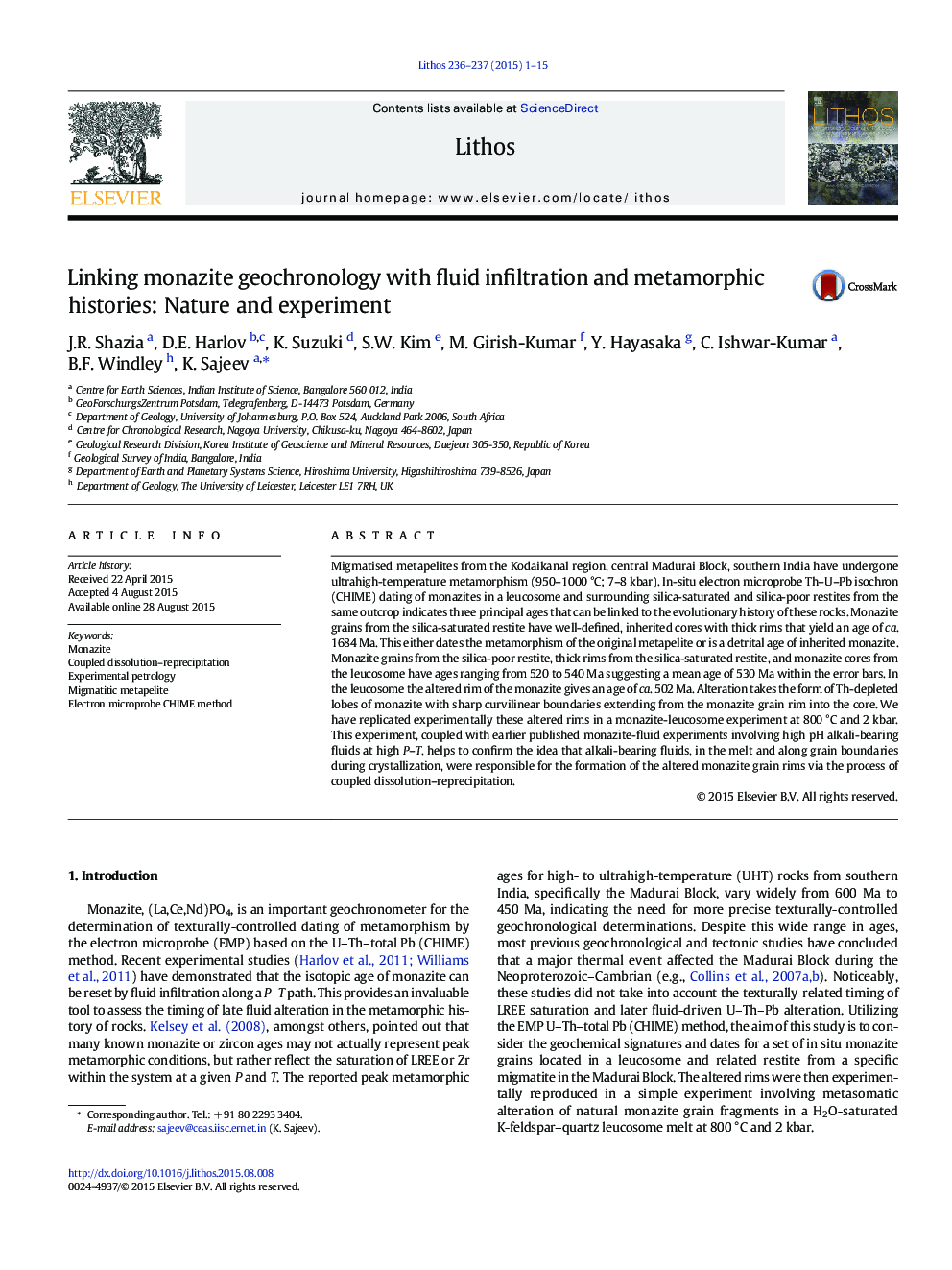| کد مقاله | کد نشریه | سال انتشار | مقاله انگلیسی | نسخه تمام متن |
|---|---|---|---|---|
| 4715594 | 1638656 | 2015 | 15 صفحه PDF | دانلود رایگان |
• UHT metapelites from southern India yielded four different in-situ ages.
• Youngest age shows timing of late stage fluid influx.
• Alkali-bearing secondary fluids from restite cause monazite alteration.
• Monazite-leucosome experiments replicate the same texture.
Migmatised metapelites from the Kodaikanal region, central Madurai Block, southern India have undergone ultrahigh-temperature metamorphism (950–1000 °C; 7–8 kbar). In-situ electron microprobe Th–U–Pb isochron (CHIME) dating of monazites in a leucosome and surrounding silica-saturated and silica-poor restites from the same outcrop indicates three principal ages that can be linked to the evolutionary history of these rocks. Monazite grains from the silica-saturated restite have well-defined, inherited cores with thick rims that yield an age of ca. 1684 Ma. This either dates the metamorphism of the original metapelite or is a detrital age of inherited monazite. Monazite grains from the silica-poor restite, thick rims from the silica-saturated restite, and monazite cores from the leucosome have ages ranging from 520 to 540 Ma suggesting a mean age of 530 Ma within the error bars. In the leucosome the altered rim of the monazite gives an age of ca. 502 Ma. Alteration takes the form of Th-depleted lobes of monazite with sharp curvilinear boundaries extending from the monazite grain rim into the core. We have replicated experimentally these altered rims in a monazite-leucosome experiment at 800 °C and 2 kbar. This experiment, coupled with earlier published monazite-fluid experiments involving high pH alkali-bearing fluids at high P–T, helps to confirm the idea that alkali-bearing fluids, in the melt and along grain boundaries during crystallization, were responsible for the formation of the altered monazite grain rims via the process of coupled dissolution–reprecipitation.
Journal: Lithos - Volumes 236–237, November 2015, Pages 1–15
